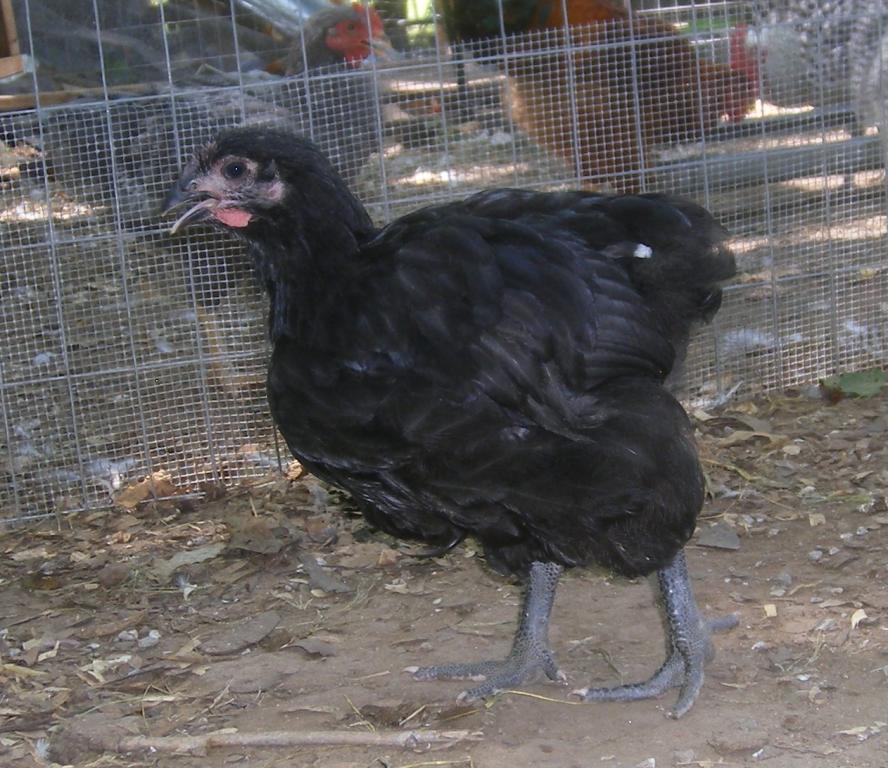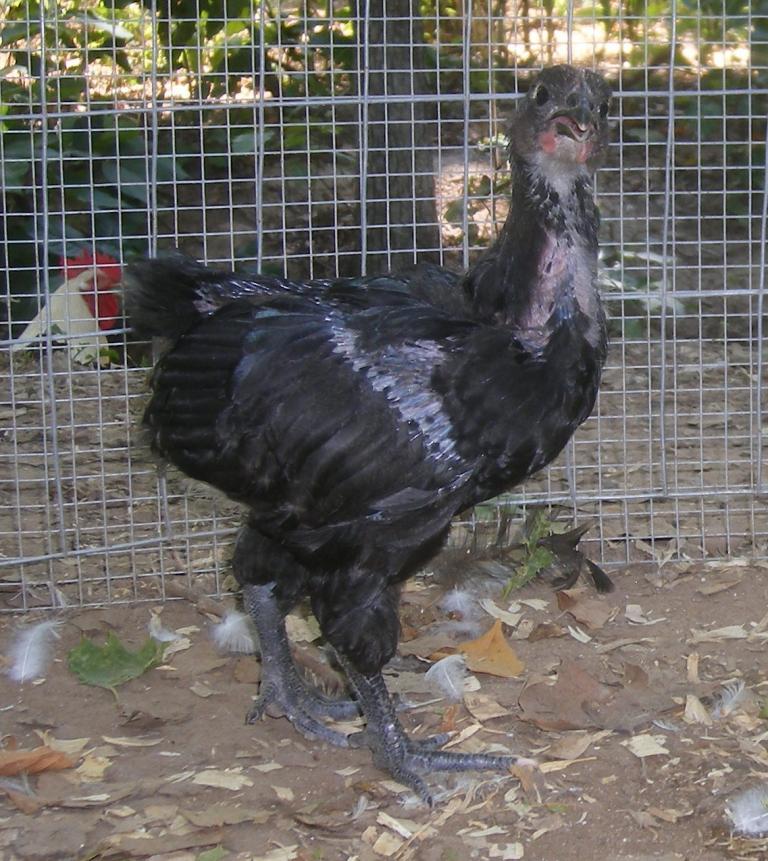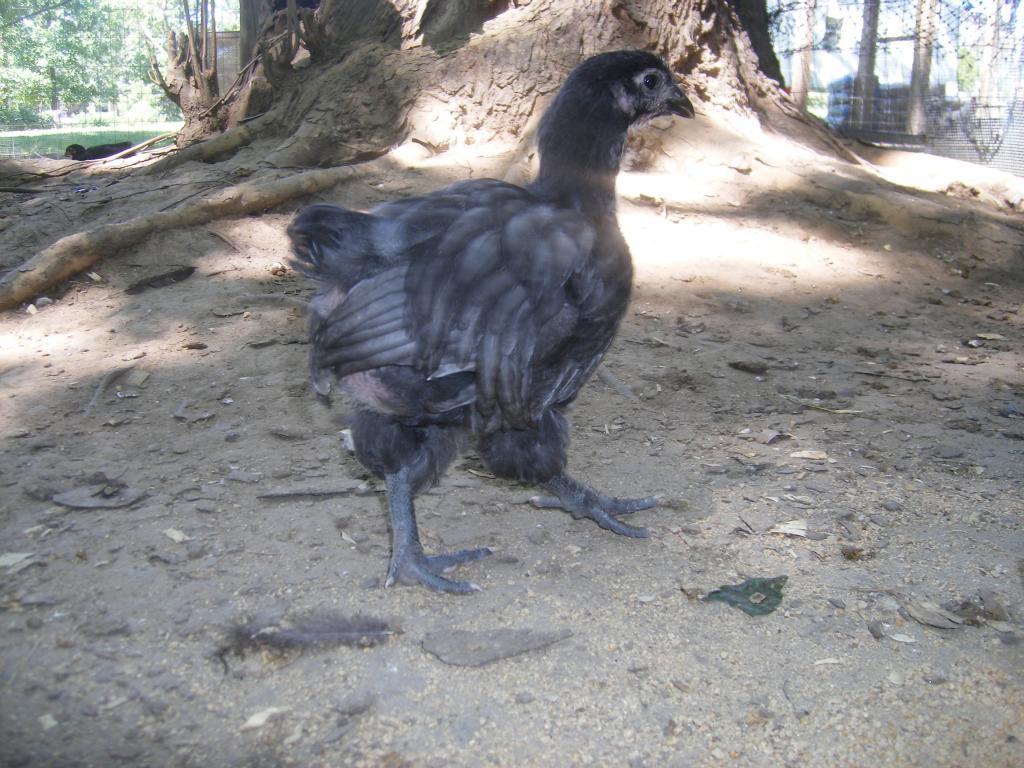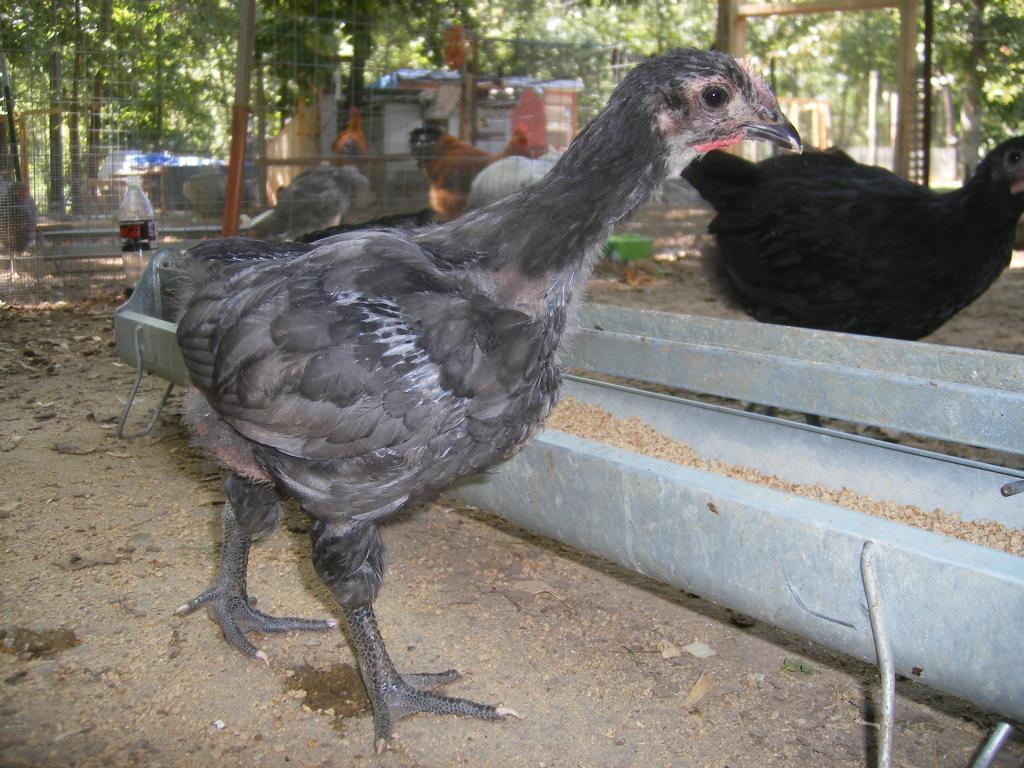I don't say splits unless it is a gene you can't see. Choc split, lavender split...etc.
I am very upfront about what my birds are/were. That they have English blood and American blood and that when I was culling I was going for the English type. I have seen some 1/2 blood English that are just gorgeous! Julie has been breeding for several generations now from Charlie and his offspring, and unless she has gotten some 100% from someone, then most of her birds are not pure English. But just from looking at them can you tell? I can tell you when I was at her home last November, I would have taken ANYTHING she had raised. They were so lovely. WE (as a group) are getting to the point where selective breeding and culling are producing some stunning birds that are not 100%.
I read an article on improving the type of a certain bird. The gentleman used a silver roo to improve his red flock. He did this for several generations since all the girl chicks hatched were red. At the end his birds were red but their genetics were 90%+ silver.
I think soon it is going to get really murky, when you get to birds that look 100% English and aren't.
I, if I ever get to that point, will use the term "English Type." And then there will be the difference between 100% and one with good genetics and breeding practices.
I am sorry if this makes no sense, my 3 year old kept interrupting me.


















